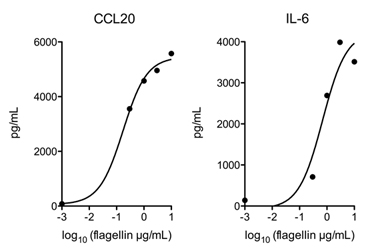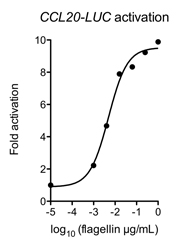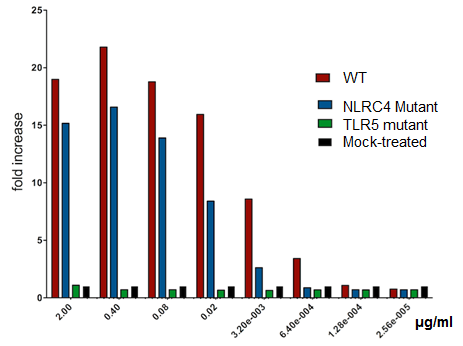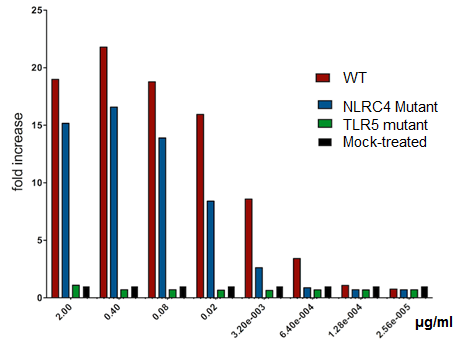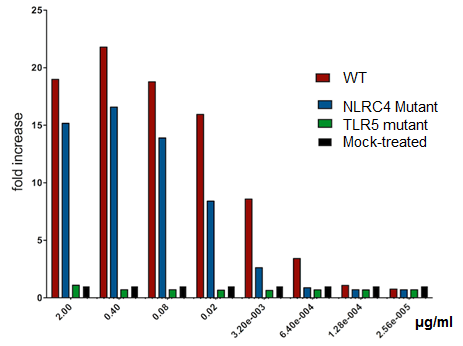
Flagellin (rec.) (AG-40B-0125) and Flagellin (NLRC4 Mutant) (rec.) (AG-40B-0126) induce CCL20-luciferase promoter through TLR5 in vitro. Method: Caco-2 cells transfected with plasmid encoding CCL20-LUC plasmid are activated for 24h wit
Flagellin (NLRC4 Mutant) (rec.)
AG-40B-0126
Product group Proteins / Signaling Molecules
Overview
- SupplierAdipoGen Life Sciences
- Product NameFlagellin (NLRC4 Mutant) (rec.)
- Delivery Days Customer10
- CertificationResearch Use Only
- Concentration0.1 mg/ml
- Estimated Purity>95%
- Scientific DescriptionFlagellin is the subunit protein which polymerizes to form the filaments of bacterial flagella. It activates the innate immune system through the receptor Toll-like Receptor 5 (TLR5) or the intracellular NLRC4 protein. The Flagellin (NLRC4 Mutant)(rec.) is only detected by TLR5 not by NLRC4. - Protein. The native flagellin [FliC] from Salmonella enterica Serovar Typhimurium strain ATCC14028 (aa 1-495) contains a small deletion at the C-terminus of the protein required for NLRC4 activation and is fused at the N-terminus to a His-tag. Source: E. coli. Endotoxin content: 95% (SDS-PAGE). Flagellin is the subunit protein which polymerizes to form the filaments of bacterial flagella. It activates the innate immune system through the receptor Toll-like Receptor 5 (TLR5) or the intracellular NLRC4 protein. The Flagellin (NLRC4 Mutant)(rec.) is only detected by TLR5 not by NLRC4.
- Storage Instruction-20°C,2°C to 8°C
- UNSPSC12352202

